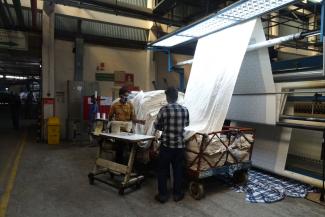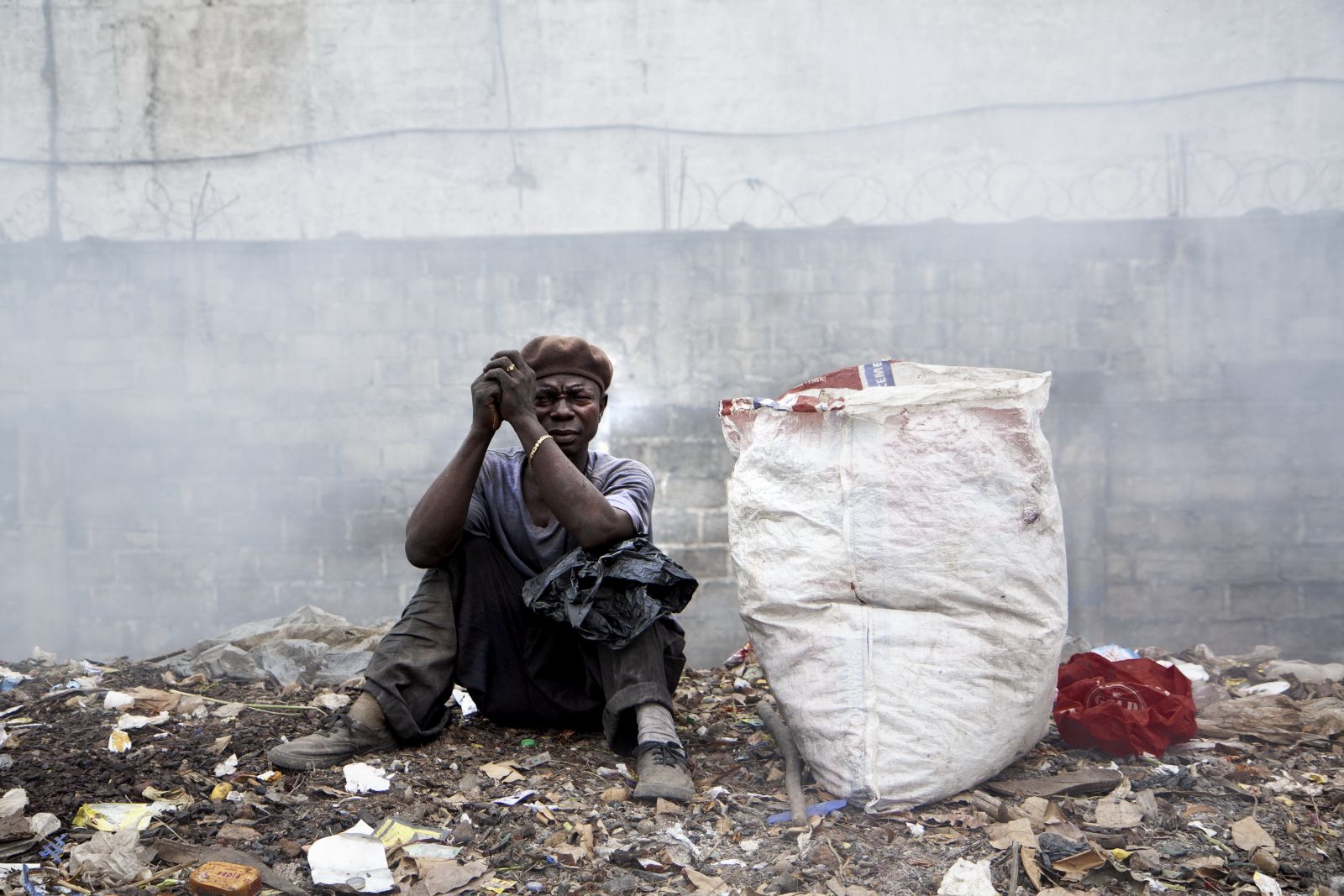Development finance
Sweeping changes envisaged

At the heart of the financing debate is the realisation that the volume of available funding is not even close to what is needed to fund the achievement of the Sustainable Development Goals (SDGs). Therefore, the Addis Ababa Agenda, which was adopted at the UN conference on Financing for Development in 2015, also considers other sources of finance, including domestic public funding and local or international private investment (see my article in D+C/E+Z e-Paper 2015/07).
To achieve the SDGs, the UN estimates that around $ 6 trillion a year needs to be made available until 2030. Others reckon an estimated $ 2 trillion to 2.4 trillion a year will be needed on top of current funding. But the UN believes that it will be extremely difficult, if not impossible, to secure sufficient funding in the current international situation. Its Inter-Agency Task Force forecasts that SDG 1 and SDG 2 will not be implemented in the least developed countries by 2030. In other words, global poverty will not be eradicated by 2030.
ODA from traditional donors will play a diminishing role in SDG financing. It may even be marginalised. The signs are that major changes lie ahead: increasingly significant players include new donors, migrants making remittances, the private sector, foundations and philanthropists.
Domestic public funding
Domestic public funding is already by far the most important source of finance in developing countries. Its volume more than double that of all external funding flows combined. It comprises a variety of revenue sources that are available to governments, including direct and indirect taxation, royalties from extractive industries and licence fees, or bonds issued on local capital markets. Taxes – especially those on income – are a particularly important tool for financing development. But they can be an elusive resource, especially for the world’s poorest countries, where tax revenues in relation to gross domestic product have actually decreased since 2012. Most countries in Sub-Saharan Africa are in a similar predicament.
Official Development Assistance
The countries of the Organisation for Economic Co-operation and Development (OECD) spent $ 146.6 billion on ODA last year. This was marginally less (-0.6%) than in 2016, which was a “record” year. Thirty percent of ODA went to sub-Saharan Africa in 2016. The largest single ODA recipients were Ethiopia, Afghanistan and Turkey. In the past 15 years, ODA has increased by 240 %. The ODA of the OECD countries is now supplemented by money from new donors such as China.
In the future, the ODA provided by OECD countries will increase far more slowly than in the past – if indeed there is any increase at all. A growing number of governments are prioritising domestic concerns and show little interest in stepping up development cooperation (DC). Particularly poor countries and fragile states will continue to need classical DC for a number of years in order to finance public spending and balance-of-payment deficits. Nonetheless, they will be urged to do more to mobilise domestic resources – not least because state building goes along with significant potential benefits. Donors will offer support for improving tax systems as well as the promotion of “fair deals” with transnational companies and the creation of social-protection systems.
China has changed the “game”, giving developing countries more options. China is a popular donor because the money it hands out is not conditional upon political reform. However, the development landscape and its actors will be fragmented even more in the years ahead. Currently, there are about 60 bilateral and more than 250 multilateral donors.
The ministries or institutions currently responsible for development cooperation will focus on the core issue of poverty reduction as well as on support for specific global public goods and global challenges. It is likely that more traditional DC spending will shift to other ministries.
Because of multilateralism’s present weakness, bilateral cooperation is expected to increase. This trend can already be observed in Germany. There will also be more linking of aid to donors’ national interests. The “aid-is-good-for-us narrative” will figure more prominently in the rationale for ODA spending.
Blending finance
ODA geared to private-sector development will increase significantly. Relevant instruments include loans and guarantees from governments, as well as the purchase of shares in the capital of companies operating in ODA receiving countries. The OECD terms is “blending finance”. It stands for the strategy of mobilising additional private-sector money from OECD countries for business investments in partner countries.
Whether such approaches are called “blending”, “leveraging” or “subsidisation”, they are set to grow. Various donors are upgrading their mechanisms. The EU, for instance, has launched the European Fund for Sustainable Development (EFSD). Mechanisms of its kind, however, will probably only make a major difference once they are supported by local institutions in developing countries. The relevant institutions will generally be national development banks. They could serve as platforms for launching local projects, mitigating implementation risks and facilitating the resolution of problems at the local level.
Private finance
The role of domestic and international private capital has become stronger in developing countries, but is still fairly limited on the whole. In addition to foreign direct investment, private enterprises have started to tap foreign capital markets to a substantial extent. This is so even in poor developing countries. These private, non-securitised loans have become increasingly significant and will become even more significant in the future.
Domestic private investment is extensive, stable and growing. It currently accounts for more than 25 % of GDP in developing countries. The investment comes predominantly from the banking sector, which tends to be state owned, and from local companies that are reinvesting profits.
The main source of external finance is private capital, much of it in the form of direct investment. Private capital has amounted to more than 80 % of long-term financial flows to developing countries since the year 2000. However, the volume of direct investment has been decreasing in recent years. There are also major regional differences in direct investment: more than 70 % has gone to East and South Asia, less than eight percent to under-financed least-developed countries.
Direct investment can certainly help to achieve the SDGs if it is channelled into development-related areas (such as renewable energy). But the private sector has so far shown little willingness to deliver on the commitments of the Addis Agenda. It is thus expected that government and multilateral donors will do more to support productive investment in developing countries, particularly in poor ones. Government guarantees and insurance are options. In addition, public and political pressure on multinational companies will increase to assume more (financial) responsibility for improving working conditions and ensuring sustainable value chains.
Migrants’ remittances are another important private financial flow for developing countries. According to World Bank figures, they totalled $ 466 billion in 2017 – a new record that is likely to be beaten in 2018. Remittances actually amounted to more than three times the total volume of ODA last year.
However, the positive impacts of remittances predominantly benefit the migrants and their families themselves, not the economy as a whole. In many countries, remittances account for more than ten percent of national income. This is the case, for instance, in Tajikistan, Nepal, Liberia, Haiti, Jordan and the Philippines. The growing volume of money remitted makes it an increasingly attractive source for financing state projects. Ethiopia, for example, issued a diaspora bond to finance a dam, and Nigeria launched one for infrastructure projects. Remittances will be harnessed more in the future, not just by state agencies, but also by private actors. It is reasonable to assume that national governments, in particular, will make greater use of remittance capital.
Private foundations and philanthropists will play an increasingly important – and influential – role. The Co-Impact initiative established in late 2017 seeks to coordinate philanthropist activity worldwide and make it more effective. Private foundations often step in where governments fail – not just in developing countries but even when it comes to financing multilateral organisations such as the WHO. In the future, even more attention must be paid to ensuring that the definition of the public interest will not be left to super-rich philanthropists (see D+C/E+Z focus section in e-Paper 2017/12).
Debt and other problems
Developing countries’ debt has risen sharply in the past five years, and there is growing concern over the prospect of a new debt crisis. According to the International Monetary Fund (IMF), the rise in debt particularly affects low-income countries. IMF figures show that 18 countries are at serious risk of running into repayment difficulties – or have already encountered them (see focus section in D+C/E+Z e-Paper 2018/08).
Because of the ineffectiveness of international tax cooperation, countries are encouraged to compete with others (generally for the lowest tax rate). The result for some countries is tax base erosion (see focus section in D+C/E+Z 2018/01).
Global trade growth has slowed since the financial crisis and is currently even recessive. The world trade system has a major impact on developing economies. In particular, poorer countries are extremely dependent on volatile commodity prices. Apart from offering better access to their markets, advanced economies should help developing countries to implement strategies to overcome their dependence on primary commodities. Protectionist trade policies might be an option to promote industrial-sector growth.
It is not terribly bold to predict that the SDGs will not be implemented by 2030 unless there is a change in current financing trends, but there is every reason to doubt that it will be the case. For the “classical” DC actors, change means having to respond much more effectively to SDGs requirements and deliver results in fragile states. They will need to develop new forms of cooperation with the private sector and see their role – and indeed act – much more as accelerators and facilitators, driving efforts on global warming and climate adaptation. They will also need to work a lot harder to get across the message that global welfare is absolutely in the national interest.
Ulrich Post heads the general policy division at Welthungerhilfe, a German civil-society organisation.
ulrich.post@welthungerhilfe.de
http://www.welthungerhilfe.de








